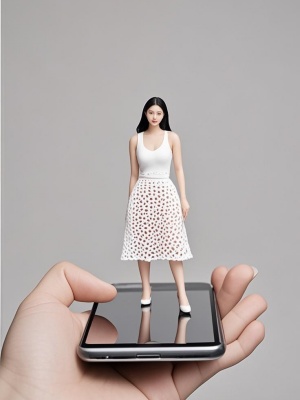The Art of Realistic Portrait: Capturing the Essence of Humanity
Introduction: The Timeless Appeal of Realistic Portraiture
Realistic portrait art has captivated audiences for centuries, from Renaissance masterpieces to contemporary hyperrealistic works. This art form goes beyond mere representation - it captures the soul, emotions, and unique characteristics of the subject. In today's digital age, artists combine traditional techniques with modern tools like AI painting to push the boundaries of realism.
The Fundamentals of Realistic Portrait Art
Anatomical Accuracy and Proportions
Creating convincing realistic portraits begins with understanding human anatomy. Artists must master:

- Facial proportions (the rule of fifths)
- Skull structure and muscle placement
- Light interaction with facial features
Mastering Light and Shadow
Chiaroscuro - the interplay of light and shadow - creates depth and dimension. Key considerations include:
- Identifying the primary light source
- Understanding form shadows vs cast shadows
- Creating gradual value transitions
Modern Techniques in Realistic Portraiture
Traditional vs Digital Approaches
While oil painting remains the gold standard, digital tools offer new possibilities. Many artists now use:
- Graphics tablets with pressure sensitivity
- 3D modeling references
- AI-assisted sketching tools
The Role of AI in Contemporary Portraiture
Platforms like MediaAI demonstrate how artificial intelligence can enhance the creative process without replacing the artist's vision. AI can assist with:

- Initial composition layouts
- Color palette suggestions
- Texture simulations
Common Challenges and Solutions
| Problem | Solution |
|---|---|
| Unconvincing skin texture | Study pore patterns and use varied brush techniques |
| Lifeless eyes | Focus on moisture reflections and iris details |
| Flat facial structure | Use anatomical references and study planes of the face |
Conclusion: The Future of Realistic Portrait Art
As technology evolves, so does realistic portraiture. The combination of traditional skills and modern tools like those found in digital galleries creates exciting new possibilities. Whether created with brush or stylus, the power of a well-executed portrait to capture human essence remains unchanged. For those interested in exploring these techniques further, resources like the Tate Museum's portrait collection provide excellent inspiration.

For artists looking to enhance their portrait skills, consider studying both classical masters and contemporary realists, and don't hesitate to experiment with new tools that can complement your traditional techniques.